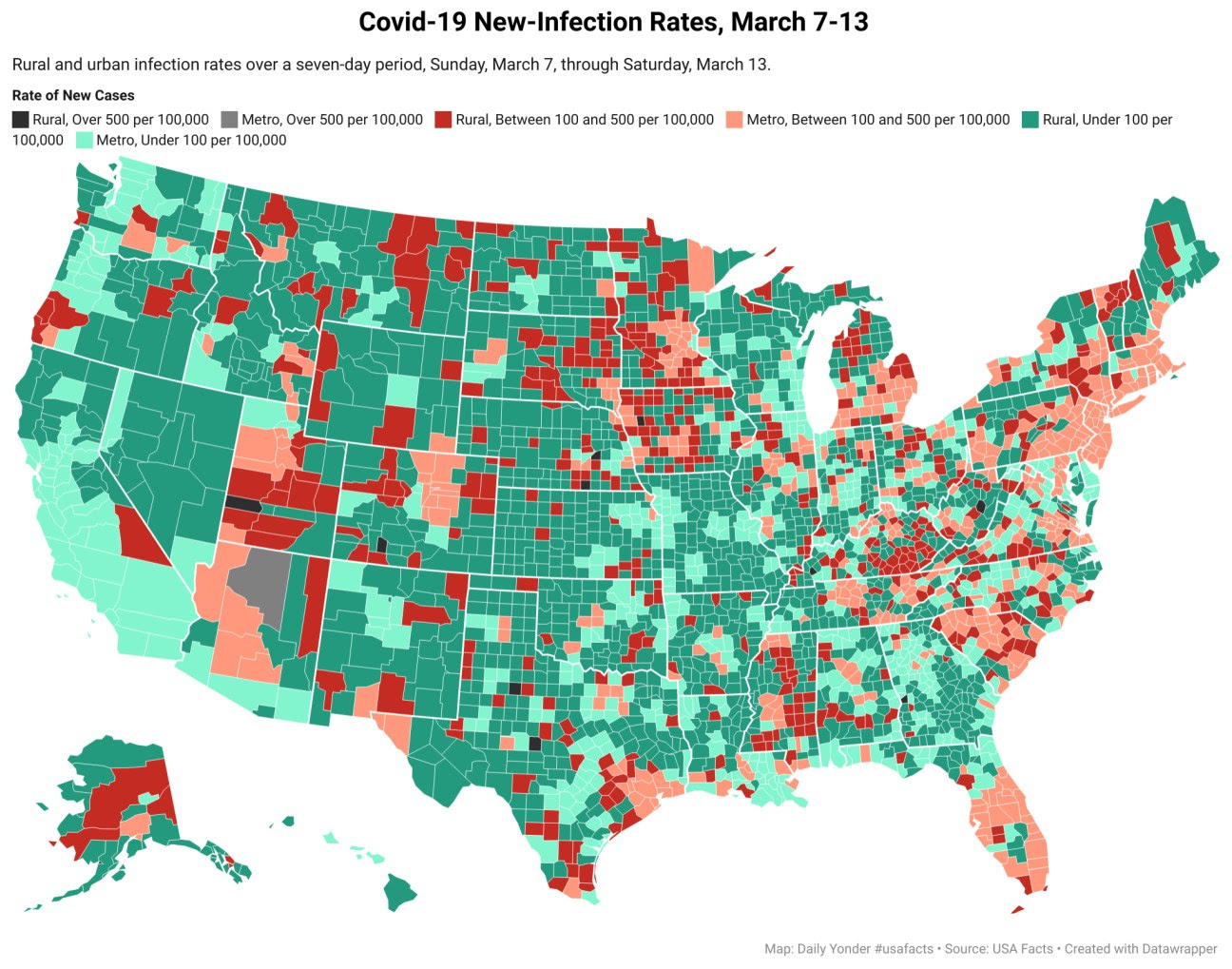- Senator Baldwin Introduces HSHS Act to Protect Communities from Hospital Closures
- What to Know about Smoke, Heat and Health
- Tribal Partnership With UW-Madison Combines Ag Research With Indigenous Food Knowledge
- The Rewards of Working as Rural Docs
- Request for Information (RFI): Evolving the Network of the National Library of Medicine
- Dental Therapists, Who Can Fill Cavities and Check Teeth, Get the OK in More States
- Colorectal Cancer Is Rising among Younger Adults. Some States Want to Boost Awareness.
- Rural Hospitals Built During Baby Boom Now Face Baby Bust
- Food Stamps Go Further in Rural Areas — Until You Add Transportation Costs
- CMS Announces Resources and Flexibilities to Assist with the Public Health Emergency in the State of Texas
- CMS Proposes New Payments for Digital Health Under CY2025 PFS Draft Rule
- Improving Public Health by Strengthening Community Infrastructure
- Biden Harris Administration Proposes Policies to Reduce Maternal Mortality, Advance Health Equity, and Support Underserved Communities
- Nearly Half of U.S. Counties Don't Have a Single Cardiologist
- Randolph County, Ill. Turns Unused Part of Nursing Home Into State-Of-The-Art Behavioral Health Center
Rural Response to Coronavirus Disease 2019
The Rural Health Information Hub has a compendium of rural-specific activities and guidelines, including Rural Healthcare Surge Readiness, a tool with resources for responding to a local surge in cases.
ATTC Network COVID-19 Resources for Addictions Treatment
The Addiction Technology Transfer Center (ATTC) Network was established in 1993 by the Substance Abuse and Mental Health Services Administration. The online catalog of COVID-related resources includes regularly-updated guidance and trainings for professionals in the field.
CRS Report on the Digital Divide in the U.S.
The Congressional Research Service (CRS) provides objective policy and legal analysis to committees and members of the U.S. House and Senate. This report describes the availability of broadband internet by state and across urban, rural, and tribal areas.
COVID-19 Resources from the Federal Transit Administration (FTA)
The agency that assists local transit authorities includes several rural examples in its list of initiatives across the country to get residents to vaccination sites. FTA’s National Center for Mobility Management also has a webinar series specific to pandemic efforts and other resources for planning transit.
Learn More About Changes to the Federal Definitions of Rural
This recording of a webinar hosted by the National Organization of State Offices of Rural Health explores the recent changes to the rural definition that FORHP uses to determine eligibility for grants. The recording also includes discussion of proposed changes to designations set by the Census Bureau and by the Office of Management and Budget (e.g., Metropolitan Statistical Areas and Urbanized Areas) and how those relate to FORHP’s definition.
Information Requested: NIH Improving the Mental Health of Rural People – April 15
The National Institutes of Health (NIH) seeks input on how the National Institute of Mental Health might learn about and remedy research gaps in knowledge to address mental health disparities in rural people and communities.
Urban–Rural Differences in Drug Overdose Death Rates, 1999–2019
Select key findings
Data from the National Vital Statistics System, Mortality
- From 1999 through 2019, the rate of drug overdose deaths increased from 6.4 per 100,000 to 22.0 in urban counties and from 4.0 to 19.6 in rural counties.
- In 2019, rates in rural counties were higher than in urban counties in California, Connecticut, North Carolina, Vermont, and Virginia.
Keywords
opioids, methamphetamine, National Vital Statistics System, Mortality (NVSS–M)
For more information, visit the full report
From 2016-2019, the age-adjusted drug overdose death rates were higher in urban counties than in rural counties.

Suggested Citation:
Hedegaard H, Spencer MR. Urban–rural differences in drug overdose death rates, 1999–2019. NCHS Data Brief, no 403. Hyattsville, MD: National Center for Health Statistics. 2021. DOI: https://dx.doi.org/10.15620/
Ways to Access Other NCHS Products and the National Vital Statistics System:
|
|
|
Studies: Rural Americans Less Likely to Follow Some Covid-19 Prevention Measures, Get Vaccines

By Liz Carey
But researchers agree that finding the right spokespeople for the prevention protocols and vaccines could change minds and make a difference.
Read more
New Rural Infections Drop to Lowest Number since July; Deaths Also Decline

By Tim Murphy and Tim Marema
New rural cases have fallen by 80% since January. Deaths are down by two-thirds during the same period.
Read more

CDC Ebola Clinical Alert
A recent HealthLeaders article discusses the Centers for Disease Control and Prevention (CDC) “Ebola Clinical Alert for U.S. Healthcare Personnel” and is recommending that all U.S. healthcare settings should ask about international travel while screening patients and visitors for signs and symptoms of COVID-19. As of March 4, airlines are also required to collect and transmit contact information to the CDC for “appropriate public health follow-up and intervention for all passengers boarding a flight to the U.S. who were in the Dominical Republic of the Congo or the Republic of Guinea within 21 days before their arrival in the U.S. International travel histories are to alert healthcare personnel to the possibility of other communicable infections, such a viral hemorrhagic fever, that need specific infection control precautions and/or treatments.
